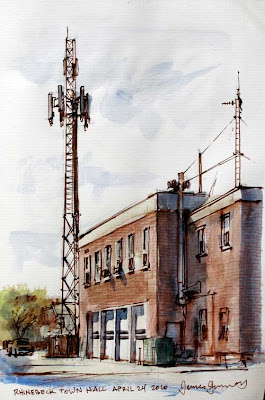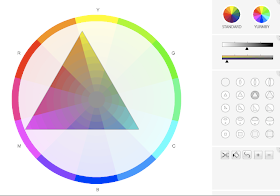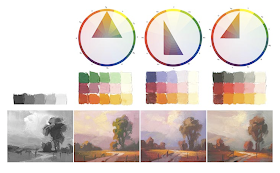On May 16, at the
Delaware Art Museum, I’ll be offering a workshop called “Attack of the Tool People.” We’ll be designing mischievous monsters that are part household tool and part human. Below: Henrich Kley

This workshop is for all ages and ability levels. If you come, you can also see the Dinotopia exhibition and the fabulous collection of Howard Pyle and Pre-Raphaelites. Below: Boris Artzybasheff.

Here’s the backstory: Whenever your Do List gets more than 10 items long, a mysterious enchantment travels into the closets and drawers of your house, bringing a “Tool Person” to life. Tool people are impish superheroes that arise from common household objects. They want to help you with your Do List, but their way of fixing things is unorthodox at best and dangerous at worst. That’s why you want to keep your Do List short. (The Tool People are hammering and sawing in my house every night.)
Here's information for those attending:
Please bring:
1. A tool from the kitchen, art studio or workshop.
It should suggest a face or a head, but it doesn’t have to be symmetrical. It might be a wine cork puller, nutcracker, tea strainer, can opener, adjustable pliers, hammer, hole punch, pencil sharpener, drill, camera, or a few computer part. Bring a few other spare parts for components.
2. An action figure or doll.
It can be any size. It doesn’t have to match the size of the tool.
3. Your favorite drawing media.
Everybody should bring a couple of regular pencils and an eraser to get started with concept work.
If you like, you can also bring markers or watercolors, but please no oils because a lot of people are sensitive to the fumes. I recommend bringing a set of water-soluble colored pencils. Caran- d'Ache Supracolor, Derwent Inktense, Prismacolor, or other brands are OK. Twelve or eighteen colors should be more than enough. If you don't want to get a whole set, you can buy about six or seven individual pencils.
If you bring the water-soluble colored pencils, I also recommend bringing a water brush. This is a hollow-handled plastic brush with a nylon fiber tip, marketed under the name Niji or Kuretake and other brand names. Fill the handle with water from the tap.
4. Sketchbook paper or card stock.
The paper should be fairly heavy and smooth. You can use watercolor paper in a separate sheet or a Moleskine watercolor sketchbook, which is perfect.
Recommended for all ages and both beginner and advanced students. Those of you who came to the February workshop are most welcome to return, because we’ll be doing a different challenge this time.
Sunday, May 16 | 11:00 a.m. – 4:00 p.m.
$55 Members/$65 Non-Members
On Saturday, May 15 at 1:00, I'll be repeating the talk I gave in February: "
Fact and Fantasy: The Making of Dinotopia," free with paid admission.
That's about it! Look forward to seeing you all at workshop.
----------
Delaware Museum Workshop information.Previously on GJ: Drawing portraits with water-soluble colored pencils.
The Dinotopia exhibit at the Delaware Art Museum.
 Fifty years from now, cell towers will no longer be in use. Most of them will be torn down or converted to other uses. They’ll be a rare sight. Only older people will use cell phones or iPads.
Fifty years from now, cell towers will no longer be in use. Most of them will be torn down or converted to other uses. They’ll be a rare sight. Only older people will use cell phones or iPads. 
















































